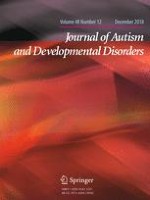03-04-2018 | Original Paper
Broad Autism Phenotypic Traits and the Relationship to Sexual Orientation and Sexual Behavior
Gepubliceerd in: Journal of Autism and Developmental Disorders | Uitgave 12/2018
Log in om toegang te krijgenAbstract
Individuals with higher levels of the broad autism phenotype (BAP) have some symptoms of autism spectrum disorder (ASD). Like individuals with ASD, people with higher-BAP may have fewer sexual experiences and may experience more same-sex attraction. This study measured BAP traits, sexual experiences, and sexual orientation in typically developing (TD) individuals to see if patterns of sexual behavior and sexual orientation in higher-BAP resemble those in ASD. Although BAP characteristics did not predict sexual experiences, one BAP measure significantly predicted sexual orientation, β = 0.22, t = 2.72, p = .007, controlling for demographic variables (R2 change = .04, F = 7.41, p = .007), showing individuals with higher-BAP also reported increased same-sex attraction. This finding supports the hypothesis that individuals with higher-BAP resemble ASD individuals in being more likely than TD individuals to experience same-sex attraction.
